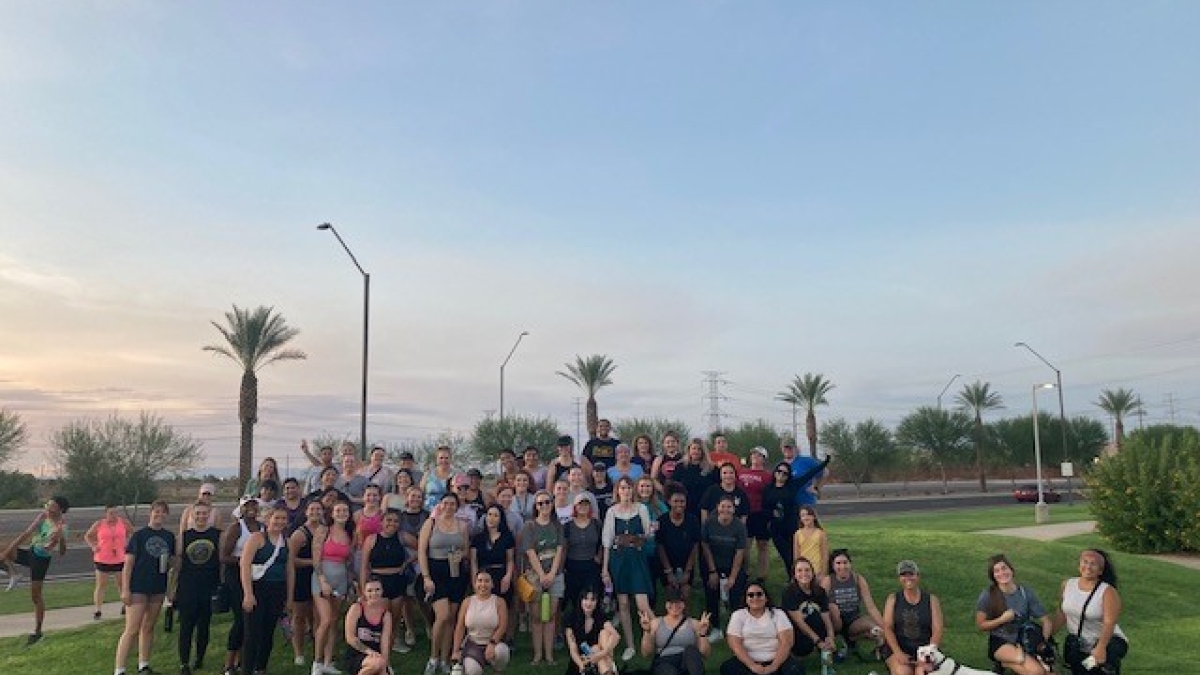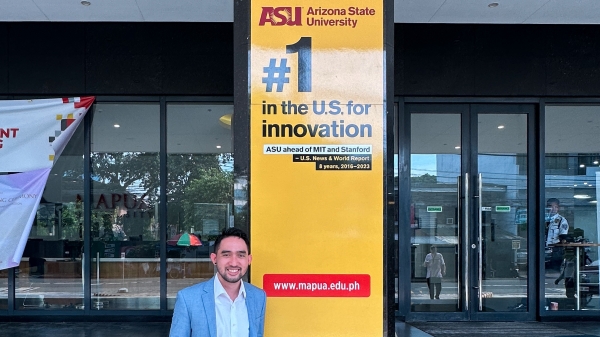What started as a few women walking in safety is now a force of inclusion that attracts dozens

Members of Phoenix Babes Who Walk gather at a recent outing. Photo courtesy Grace Juliet McWilliams
Nearly five months ago, six women started walking together at Phoenix parks to ensure a safe experience. Photos and descriptions of their first walk posted on social media were shared, and then shared some more.
Soon, more joined them on a second walk, even more on the third, and, well…
That first walk in mid-May today has become a schedule of mostly weekly walks, held along different routes throughout the greater Phoenix area. Phoenix Babes Who Walk typically attracts between 100 and 150 participants of different genders, races, ethnicities, sexual orientations and physical abilities.
Participants make connections and build friendships while confidently making their way along those streets with safety in numbers, said one of the group’s leaders, Arizona State University sophomore Grace Juliet McWilliams.
McWilliams, a student in ASU’s School of Community Resources and Development, is working toward a bachelor’s degree in nonprofit leadership management with a minor in recreational therapy.
She said she became part of the group early, joining it on that third walk, which attracted 200 participants. She applied and was appointed for one of its now 10 leader positions. McWilliams is one of two ASU students and one alum in the group’s leadership.
“We wanted to create a safe space for anybody and everybody who wanted to come,” she said. “Now we’re all over town. We know the Phoenix area is vast, so we strive to have different walking locations every week. This is to ensure that we can reach the people of our community wherever they are.”
Directing dozens of participants is “the best challenge anyone can ever have,” McWilliams said. “It can be stressful, but it’s a good thing to stress about.”
Five core values
The rules for participation are simple. The group adheres to five core values, she said: community, inclusivity, wellness, courage and honesty.
“So long as people uphold those values, we are open to having them,” McWilliams said.
The group originally was known as City Girls Who Walk Phoenix, taking its name from a similar gathering in New York City. Then the decision was made for the group to become more inclusive, including persons who are non-binary as well as LGBTQ, which prompted selecting a more inclusive name.
“We chose ‘babes’ because it is beyond ‘girls.’ We didn’t want the name to be a barrier,” said McWilliams, who said the term is not meant to be derogatory and instead, is intended to be empowering and endearing. “Anybody can be a babe,” she said.
She said some administrative tasks are still pending, such as learning how the group might set up more walks in the Tempe area to coincide with major events on the ASU Tempe campus, and registering the group as a nonprofit organization.
The group is planning to hold more free community events, such as an added hike during the month, and even a Halloween movie night in October.
Course lessons apply to managing group
McWilliams said she’s applied much of what she’s learned from her nonprofit leadership and special events management classes to running the group, and she often finds herself raising her hand to contribute in class discussions based on her experience as a group leader.
“Our leadership team divides the work equitably, with overlapping responsibilities and shared tasks and projects. We take inspiration from the nonprofit world when it comes to management, events and marketing. I have used many of the skills developed in my nonprofit major in co-leading this group,” McWilliams said.
One of her instructors is Erin Schneiderman, a clinical assistant professor in the School of Community Resources and Development, part of the Watts College of Public Service and Community Solutions.
“We take great pride in teaching our aspiring event professionals the foundational elements of planning so they have the tools and confidence to design their own initiatives in areas that they are passionate about,” Schneiderman said. “Grace is a wonderful example of a student pursuing a meaningful and inclusive project, implementing components learned in the classroom such as goal setting, marketing and programming.”
McWilliams said she and her fellow leaders are always trying to make the walks even more inclusive, including providing accommodations for those with barriers to participation.
“It’s a community for everyone, a community that found me,” McWilliams said.
More Health and medicine
College of Health Solutions medical nutrition student aims to give back to her Navajo community
As Miss Navajo Nation, Amy N. Begaye worked to improve lives in her community by raising awareness about STEM education and…

Linguistics work could improve doctor-patient communications in Philippines, beyond
When Peter Torres traveled to Mapúa University in the Philippines over the summer, he was shocked to see a billboard promoting…

Turning data into knowledge: How Health Observatory at ASU aims to educate public
This is how David Engelthaler described his first couple of months on the job as executive director of the Health Observatory at…